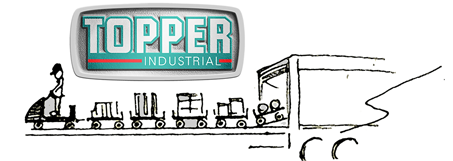- Improves safety by reducing motion, handling, and forklift movement. READ HERE.
- Improves quality by first defecting defects instead of creating a bad batch. READ HERE.
- Improves flexibility by shortening lead-times through processes (connected processes, smaller lot sizes). READ HERE.
- Improves scalability by making equipment that is efficient with smaller lot sizes. READ HERE.
- Reduces inventory by connecting processes and reducing lot sizes through quick changeover. READ HERE.
- Improves productivity by working on one thing at a time and cutting out wasted motion. READ HERE.
- Simplifies material replenishment by making the speed of material consumption steady and paced to a takt time. READ HERE.
- Frees up floor space by opening space used for inventory. READ HERE.
- Makes kaizen take root by exposing hidden problems and making them more visible. READ HERE.
- Improves morale by promoting cross-training and skill enhancement, as well as identifying and solving problems more quickly and reducing frustration. READ HERE.
Topper Industrial will use this blog to take a deep dive and look at this issue and benefits.
Lean leadership is required for any program to become part of the culture. Whether prompted by Theory of Constraints, Lean Six Sigma, or Lean manufacturing principles top down leadership enrolling the entire team is essential. This is proven because when the leaders leave, the lean culture often retreats to doing things the “old way.”
Because the simplest behavior of lean culture, continuous process improvement, is a kaizen event, one piece flow and small lot repetitive delivery allow kaizen events to take root. It does not require a gemba walk throughout the whole plant. A single manufacturing cell that has material on time to build for a specific order is either working or failing.
Failures don’t happen over time with one piece flow. The second order is held up because of product defect discovered in the first assembly process. Corrective action is mandated before the second order commences.
Sometimes referred to as “single piece flow” or “continuous flow,” one piece flow is a key concept within the Toyota Production System. Achieving one piece flow helps manufacturers achieve true just-in-time manufacturing. When the right parts can be made available when they are needed in the quantity they are needed, it becomes evident that Kaizen events have taken root to the company culture.
One piece flow means that parts are moved through operations from step-to-step with no WIP (work in process) in between either one piece at a time or a small batch at a time. This system works best in combination with a cellular layout in which all necessary equipment is located within a cell in the sequence in which it is used. While many are familiar with the terminology, there is still a significant challenge in achieving it.
The Kaizen event creates the basis for a functional layout. The concept of achieving connected flow means implementing a means of connecting each process step within a value stream. In a typical MRP batch and queue manufacturing environment, parts move from functional area to functional area in batches, and each processing step or set of processing steps is controlled independently by a schedule. There is little relationship between each manufacturing step and the steps immediately upstream or downstream.
This is anathema to lean manufacturing because large amounts of scrap occurs when a defect is found because of large batches of WIP; also long manufacturing lead times occur driving poor on-time delivery and/or lots of finished goods inventory to compensate.
When we achieve connected flow, there is a relationship between processing steps. This type of system is Kaizen driven and creates a relationship with a pull-based system. One piece flow is the ideal method for creating connected flow because product is moved from step-to-step with essentially no waiting (zero WIP).
Ensuring all materials are where and when needed is best achieved in a fork truck free environment. Gemba walks and routine kaizen events continuously examine if there is a delay or less than optimal lean outcome. While lean leadership starts at the top, all stakeholders must see the material value of the effort. When everyone walks the kaizen path the efficacy and buy-in is widely adopted, understood, and part of lean company practice.
Topper Industrial (www.topperindustrial.com) is a leading manufacturer of material handling equipment. Topper provides lean material handling solutions to the supply chain.
Topper Industrial is able to engineer and design Industrial Carts (Mother / Daughter Cart Systems, Quad Steer Carts or Tracking Carts, Specialized Delivery Carts, Transfer Carts with Roller Deck, Static Carts, Rotation Carts, Tilt Carts or Kitting Carts), Industrial Cart Components (Parts Department), Industrial Containers (Corrugated and Wire Mesh Containers), Pallets, Lift/Tilt Systems, and Racking. Topper Industrial designs all products with ergonomics in mind, focusing on ease of use and best positioning of m

